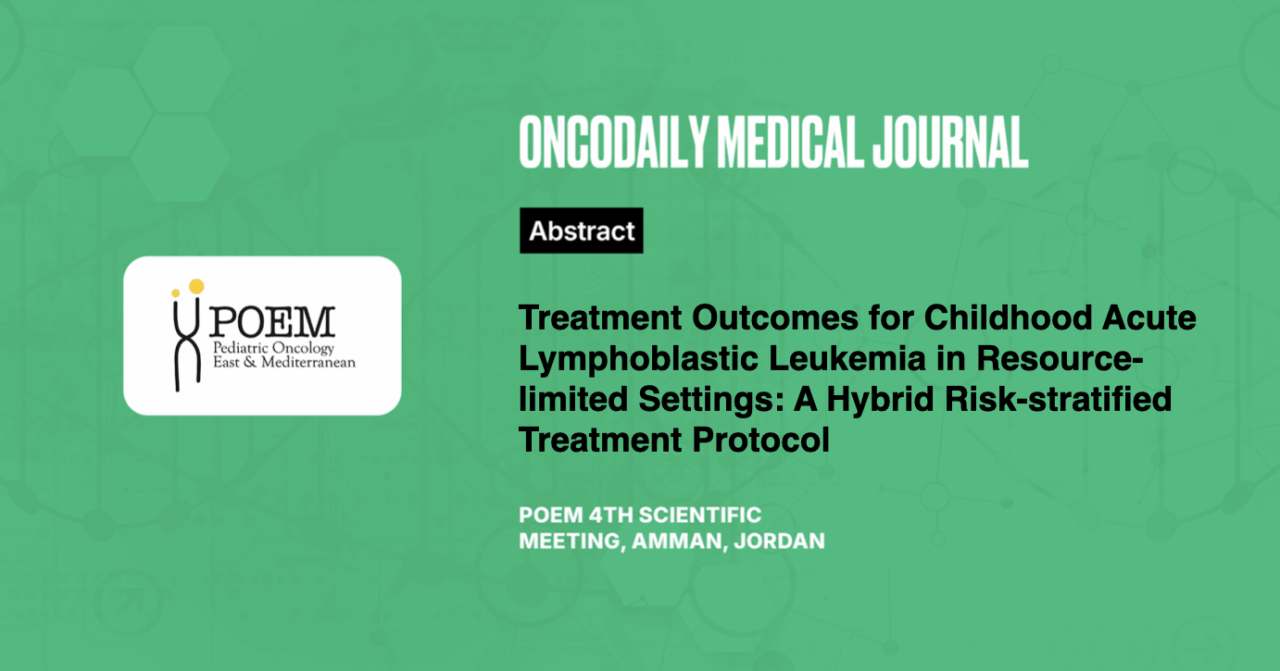Treatment Outcomes for Childhood Acute Lymphoblastic Leukemia in Resource-limited Settings: A Hybrid Risk-stratified Treatment Protocol
Abstract
Introduction: Modern pediatric ALL protocols in high-income countries have led to significant improvement in survival rates. Advanced techniques like measurement of MRD may be lacking in low-income countries. In this abstract, we describe our experience in treating children with ALL in Syria using a risk-stratified treatment protocol without MRD measurement.
Methodology: We retrospectively reviewed the outcomes of patients with ALL treated at the BASMA Pediatric Oncology Unit in Damascus, Syria, between June 2018 and June 2021. Risk stratification was based on initial WBC, extramedullary disease presence, phenotype, karyotype, FISH studies, peripheral smear assessment at day 8 of the prednisone prophase, and end of induction response assessment by bone marrow smear exam. Patients with low-risk disease received treatment as per the EORTC 58951 AR1 protocol. Intermediate-risk patients received treatment as per the EORTC 58951 AR2 protocol. Patients with high-risk disease received treatment as per the St Jude TOTAL XV protocol.
Results: The outcome of 104 consecutive patients was analyzed. The male-to-female ratio was 1.3, with a median age at diagnosis of 5.4 years. Among the patients, 76 were stratified as having low-risk disease, while 21 and 7 patients were categorized as having intermediate- and high-risk disease, respectively. Three patients (2.1%) died due to treatment-related toxicity. The median follow-up duration was 42 months. The 5-year overall survival and event-free survival rates were 79.8% and 70%, respectively. Remarkably, the low-risk patients exhibited unexpectedly lower 5-year overall survival rates of 74.9% and event-free survival rates of 66.5% compared to other risk groups.
Conclusions: Despite achieving excellent survival outcomes for children with ALL treated using a hybrid adapted risk-stratified protocol in our resource-limited setting, the lack of MRD measurement has led to lower survival rates in low-risk patients compared to other risk groups.





